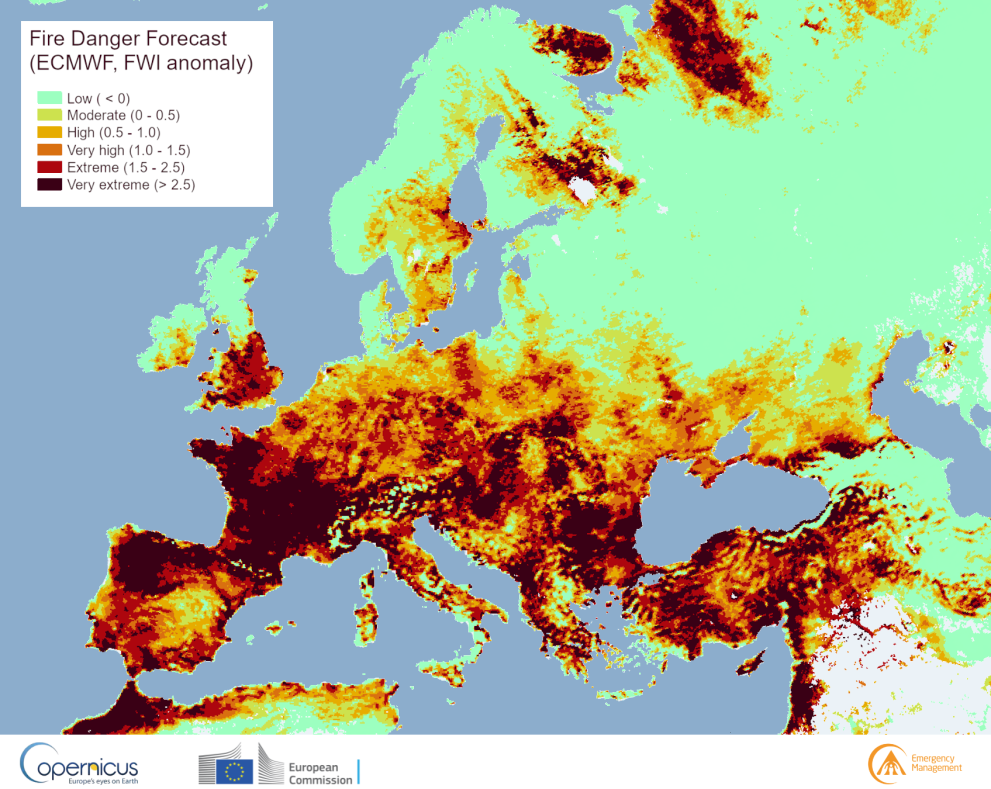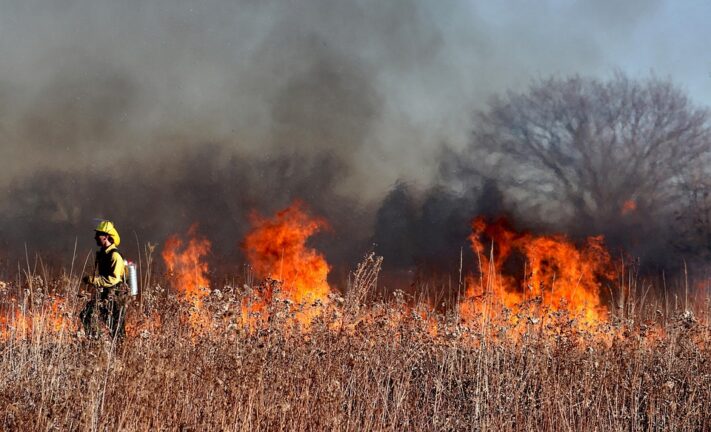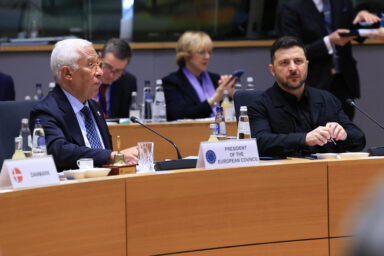More than 400,000 hectares have burnt in the EU since the beginning of 2025. That is more than twice as much as in the same period of last year. Such a sharp increase happens despite a significant rise of EU funding used to support measures against forest fires. The European Court of Auditors suggests that the money is not always spent effectively.
Media headlines may not seem to be that disastrous in 2025 as they were in the past when it comes to wildfires in Europe. In terms of casualities that reflects reality as so far only a handful of people lost their lives directly in flames. That makes a difference compared to some catastrofic fires in recent years. As an example, a huge wildfire in 2017 in Portugal killed more than 60 people.
Since 1 January 2025, 409,200 hectares of land burnt in the European Union. — European Forest Fires Information System
Measured by size and frequency of wildfires, however, it is clear that 2025 is going to be a record-breaking year. The European Forest Fires Information System (EFFIS) shows that since 1 January 2025, 409,200 hectares of land burnt in the European Union (data updated on 12 August, 2025). That is about 217 per cent of the same period of 2024. Also the number of fires detected since the beginning of 2025 shows a significant increase—1,599 vs. 1,089 in 2024. Only fires covering at least five hectares are taken into consideration).
Lack of targeted approach, no long-term perspective
A recent report published by the European Court of Auditors (ECA) suggests that EU money intended to prevent forest fires is not systematically spent where needs and risks are highest. The ECA also critisised the lack of a long-term strategy—although this is crucial for getting tangible results.
The ECA report reads that some of the projects selected to receive EU funds to prevent wildfires do not always target areas where the impact will be greatest. In some Spanish regions for example, the budget was shared between all provinces, regardless of risks and needs. The auditors also found that some of the measures that were financed were based on outdated information.
Some of the projects selected to receive EU funds to prevent wildfires do not target areas where the impact will be greatest. — European Court of Auditors
Though it is unknown how much EU money is directly spent on tackling wildfires, it is clear that this sum rises each year. Finances are chanelled in particular through the Recovery and Resilience Facility (RRF). EU countries now tend to focus more on preventive measures, such as creating firebreaks and clearing vegetation. As an example, in Portugal—one of the countries most endangered by wildfires—the percentage spent on prevention rose from 20 per cent up to 61 per cent between 2017 and 2022.
“Some fires are simply unfightable”
Scientists in general agree on the fact that the climate change contributes greatly to the sharp increase of wildfires due to extreme temperatures and prolonged periods of droughts. Many do not hesitate to use frightening words. “We can see that it’s looking fairly extreme this year,” Sarah Carter, a research associate at Global Forest Watch, said. “2023 was the warmest year on record, 2024 was the warmest year on record (…) It is this kind of perfect storm of heatwaves and drought,” Ms Carter added.
She also noted that a better forest management could help a lot to prevent wildfires, but so far it has received little attention. Such measures include diverse levels of vegetation, or steering clear of flammable species like eucalyptus. Keeping moisture in the soil is also important as is creating fire breaks by removing any flammable material.
You might be interested
According to Ms Carter, however, in some European regions there is little help. “The combination of dry conditions and strong winds means that some fires now are just not going to be able to be fought,” says researcher.
Not only Southern Europe
Current map of wildfires shows that much of the activity traditionally concentrates in Southern Europe. France, Portugal, and Spain have been hit most so far. With temperature rising across the continent, however, more and more large-scale wildfires tend to occur in regions where such disasters were so far largely unknown.

As an example, devastating fires broke out in Romania in early March 2025 and claimed at least two lives. Flames, supported by unusually warm weather, came as a surprise in period when temperatures usually hover around the zero point.
The map of fire danger forecast in Europe shows that in addition to Southern Europe the high risk areas include also parts of Sweden, Finland, or Ireland – and even such northerly regions like Russian Kola Peninsula beyond the Arctic Circle.











